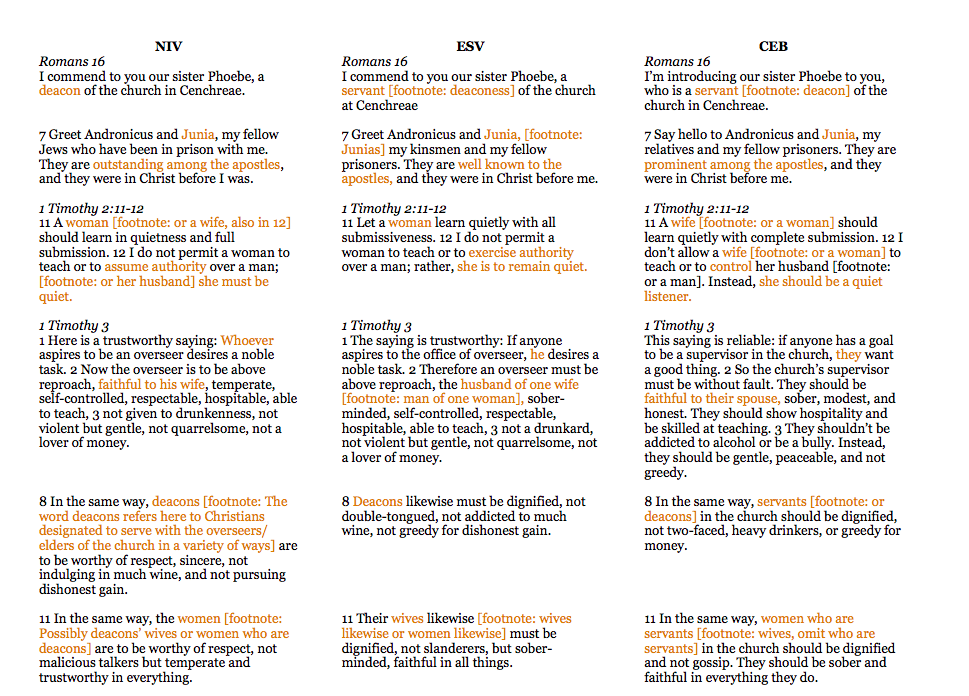Becky Castle Miller is the Discipleship Director at an international church in the Netherlands. She conveys her five kids around town on bikes and studies New Testament in the middle of the night via
Northern Live. Connect with her on Instagram and Twitter.
 English Bible translations are politicized, as Scot has written previously. That is, different factions of American Christianity hold tightly to their favorite translations—the ones that favor their particular biases—but these preferences are often the result of political maneuvering.
English Bible translations are politicized, as Scot has written previously. That is, different factions of American Christianity hold tightly to their favorite translations—the ones that favor their particular biases—but these preferences are often the result of political maneuvering.
I was aware of the bias against women’s equality in the ESV translation before I started studying with Scot, so when I first walked into his classroom in August 2016, I had the CEB ready to go on my Bible app. During that first intensive class with our cohort (History of New Testament Interpretation), Scot told us more of the story of the ESV from his front row perspective via relationships with some of the translators. The ESV is intentionally complementarian, meaning it favors a male-dominant hierarchy in marriage and the church. While Scot maintains that all modern English translations are good and reliable, he doesn’t favor the ESV because of their wording on women’s issues, among other problems.
Not all my classmates picked up on Scot’s translation preference, so in our year-two intensive last August, one student prepared to read a passage from his study Bible.
Scot interrupted him. “What are you doing bringing an ESV into our classroom?”
The student waved around the gorgeous leather Bible, and offered this reason: “It was a gift!”
Everyone, even the guilty party, laughed when Scot threatened to cast him out into the Outer Darkness. (The Outer Darkness is all space outside Scot’s classroom.) He dropped it onto the carpeted floor with a thump, slid it under his table with his foot, and begrudgingly read from another translation.
Because the student becomes like the teacher, I have also jokingly castigated young church leaders for bringing ESVs into my training meetings. Many of them are women who have not yet noticed the subtle limits the translation puts on their service in the church. In response to a question about why I don’t prefer the ESV, I created this chart. It shows just a few of the verses related to women leading in churches and how the ESV handles them compared with the NIV and the CEB.
Much can and has been said about each of these translation choices in detail, but this gives a quick overview at a glance. Again, all the modern English translations are good and reliable, but all translation is interpretation, and a translation can’t help showing the translators’ perspectives.
What is your favorite translation, how does it handle these verses, and how does that affect your view of women leading in the church?













